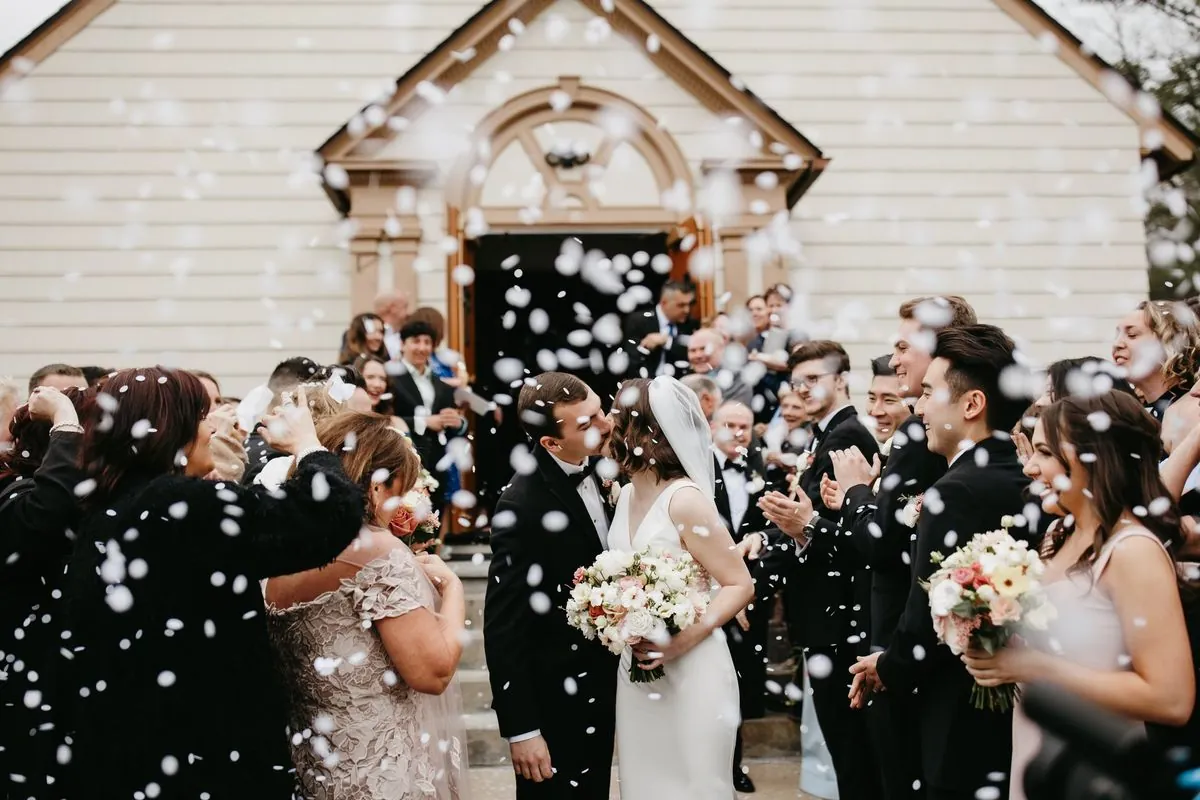Shifting Trends: Who Foots the Bill for Modern Weddings?
Wedding expenses are evolving, with couples marrying later and often contributing more. The average US wedding now costs $35,000, prompting discussions on financial responsibilities and alternative spending choices.

The landscape of wedding expenses is undergoing a significant transformation, reflecting broader societal changes. As of 2024, the traditional expectation of the bride's parents bearing the majority of wedding costs is no longer the norm. Lizzie Post, co-president of the Emily Post Institute, emphasizes the importance of open communication regarding financial contributions.
The shift in wedding expense dynamics is largely attributed to the increasing age of first-time couples. As of 2023, the median age for first marriages was 30.2 for men and 28.4 for women, a notable increase from 1947 when it was 23.7 and 20.5 respectively. This trend has led to more financially established couples often choosing to fund their own celebrations.
According to Sarah Hanlon, editor at The Knot, parents still contribute slightly over half of the average wedding budget, with couples covering the remainder. However, the financial landscape varies widely. Jove Meyer, a New York-based wedding planner, notes that in metropolitan areas like New York City, wedding costs can soar to $100,000 or more.

The average cost of a non-destination wedding in the US reached $35,000 in 2023, up $5,000 from the previous year. Destination weddings averaged $41,000. These figures represent a significant increase over time, with wedding costs having risen by over 200% since the 1990s.
"As couples marry later in life and are often more financially established, many choose to cover the majority of expenses, or even the entire wedding, themselves, sometimes accepting contributions from their families as a gesture of support rather than obligation."
The wedding industry, now worth over $60 billion annually in the US, has seen a shift in how couples approach planning. About 80% create wedding websites, and nearly 90% use online planning tools. However, Meyer cautions that social media platforms like Pinterest and Instagram can create unrealistic expectations about costs.
Same-sex couples are often at the forefront of self-funding their weddings, sometimes to avoid unwanted conditions attached to parental contributions. This trend aligns with a broader move away from traditional, gendered wedding etiquette rules.
Cultural considerations continue to play a significant role in determining financial responsibilities for weddings. Nick Leighton, host of the "Were You Raised by Wolves?" podcast, notes that it's increasingly common for expenses to be shared among both families and the couple, with each party contributing what they can or wish to.
As couples marry later, wedding costs often compete with other financial priorities. Some parents, like Tammy Mickle from New York, who saved $60,000 for her daughter's wedding, are allowing their children to repurpose these funds for other life goals, such as buying a home.
In conclusion, the evolving landscape of wedding finances reflects broader societal changes, with couples taking a more active role in funding their celebrations and often prioritizing long-term investments over lavish ceremonies. As the wedding industry continues to adapt, open communication and flexibility in financial planning remain key for couples navigating this significant life event.


































